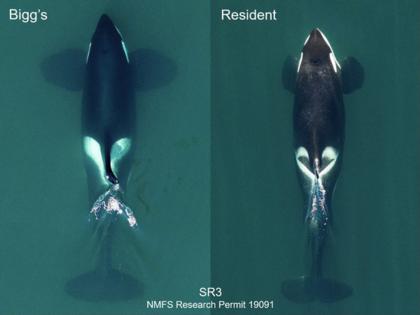These Puget Sound orcas could be designated as distinct species
Published in News & Features
SEATTLE —For more than a century, killer whales have been understood to be just one worldwide species, Orcinus orca, with many types.
But now, after decades of work, scientists have determined the differences between the two types of killer whales that frequent the Salish Sea are so large, they ought to be designated separate species altogether.
"It has been so long getting to this point," said Phil Morin, of the National Oceanic and Atmospheric Administration's Southwest Fisheries Science Center.
Morin, of the center's Marine Mammal Genetics Program, is the lead author of a paper published Tuesday night in the journal Royal Society Open Science, which officially proposes the new species designations to the international scientific community. Next, the Society for Marine Mammalogy's taxonomy committee will vote on the proposal and could make the designations in the next few months, according to a NOAA spokesperson.
The two orca types include Bigg's killer whales, which have a healthy, growing population and feed on other marine mammals, and residents, which encompass the endangered southern residents that feed on Chinook salmon and other fish.
Bigg's would be known as Orcinus rectipinnus (Latin for recti, meaning upright, and pinna, meaning fin). Bigg's should continue to be used as the common name for these whales, the scientists suggest. The name Bigg's is intended to honor the late Canadian researcher Michael Bigg, who pioneered the study of this species.
The other proposed species is Orcinus ater, (Latin for black or dark). For now, scientists suggest continuing the common name already in use for this species, of northern and southern residents, depending on their home range. Meanwhile, local tribes are being consulted by the scientists proposing the new species designations for a fitting new common name for the residents, perhaps Blackfish.
The new species designations will be the first breakouts from the worldwide Orcinus orca since the species descriptions by Charles Scammon in 1874. A whaling captain and not a scientist at all, in his book with the remarkable title, "The American Whale-Fishery," Scammon describes the ocean's top predators with quite a bit of emphasis on what he regards as their bloodthirsty ways:
"... in whatever quarter of the world the orcas are found, they seem always intent upon seeking something to destroy or devour.
"Indeed, they may be regarded as marine beasts that roam over every ocean, entering bays and lagoons, where they spread terror and death ..."
...continued
©2024 The Seattle Times. Visit seattletimes.com. Distributed by Tribune Content Agency, LLC.







Comments